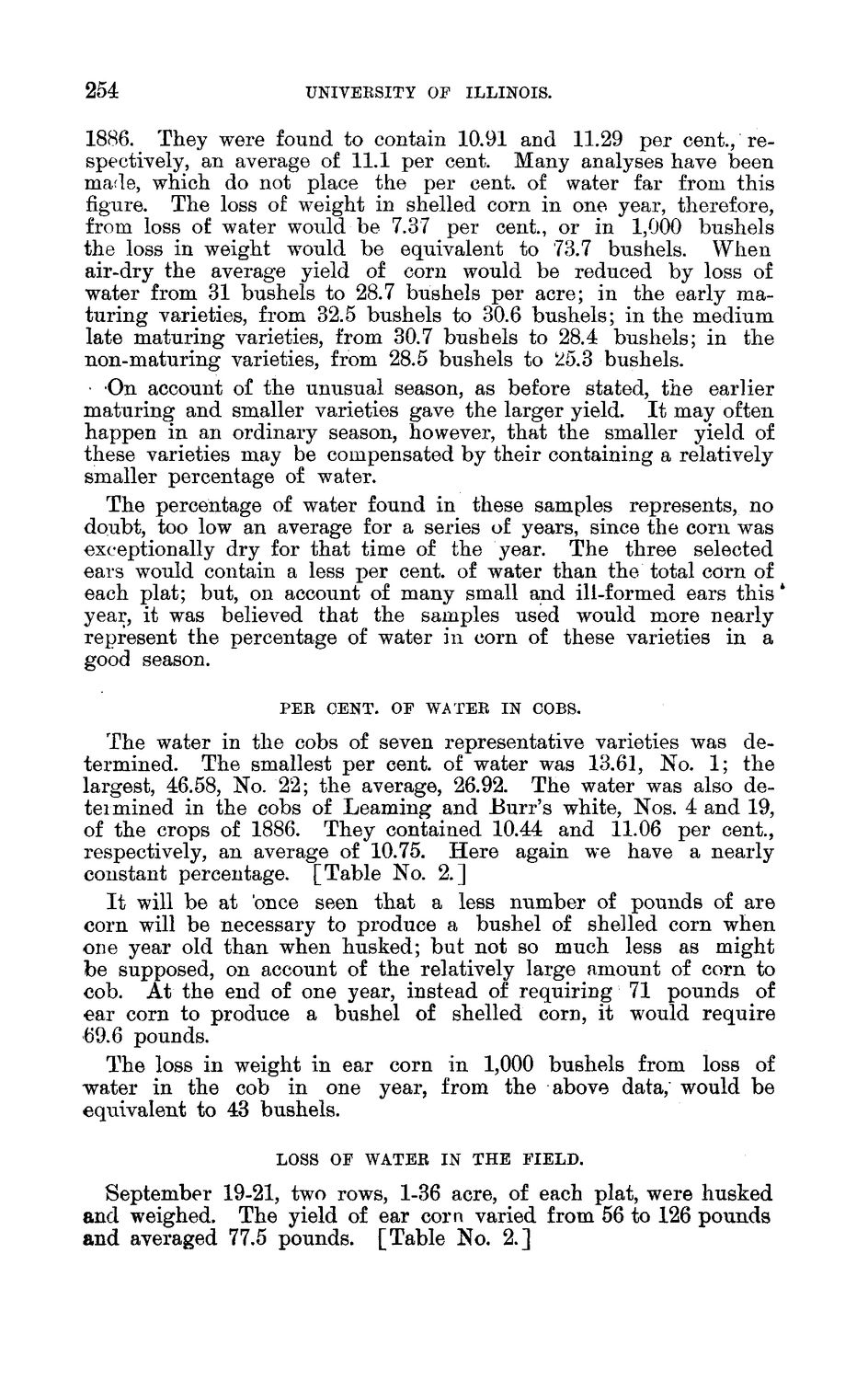| |
| |
Caption: Board of Trustees Minutes - 1888
This is a reduced-resolution page image for fast online browsing.

EXTRACTED TEXT FROM PAGE:
254 UNIVERSITY OF ILLINOIS. 1886. They were found to contain 10.91 and 11.29 per cent., respectively, an average of 11.1 per cent. Many analyses have been made, which do not place the per cent, of water far from this figure. The loss of weight in shelled corn in one year, therefore, from loss of water would be 7.37 per cent., or in 1,000 bushels the loss in weight wrould be equivalent to 73.7 bushels. When air-dry the average yield of corn would be reduced by loss of water from 31 bushels to 28.7 bushels per acre; in the early maturing varieties, from 32.5 bushels to 30.6 bushels; in the medium late maturing varieties, from 30.7 bushels to 28.4 bushels; in the non-maturing varieties, from 28.5 bushels to X5.3 bushels. •On account of the unusual season, as before stated, the earlier maturing and smaller varieties gave the larger yield. I t may often happen in an ordinary season, however, that the smaller yield of these varieties may be compensated by their containing a relatively smaller percentage of water. The percentage of water found in these samples represents, no doubt, too low an average for a series of years, since the corn was exceptionally dry for that time of the year. The three selected ears would contain a less per cent, of water than the total corn of each plat; but, on account of many small and ill-formed ears this 4 year, it was believed that the samples used would more nearly represent the percentage of water in corn of these varieties in a good season. PEE CENT. OF WATER IN COBS. The water in the cobs of seven representative varieties was determined. The smallest per cent, of water was 13.61, No. 1; the largest, 46.58, No. 22; the average, 26.92. The water was also determined in the cobs of Learning and Burr's white, Nos. 4 and 19, of the crops of 1886. They contained 10.44 and 11.06 per cent., respectively, an average of 10.75. Here again we have a nearly constant percentage. [Table No. 2.] I t will be at once seen that a less number of pounds of are corn will be necessary to produce a bushel of shelled corn when one year old than when husked; but not so much less as might be supposed, on account of the relatively large amount of corn to cob. At the end of one year, instead of requiring 71 pounds of ear corn to produce a bushel of shelled corn, it would require 69.6 pounds. The loss in weight in ear corn in 1,000 bushels from loss of water in the cob in one year, from the above data, would be equivalent to 43 bushels. LOSS OF WATER IN THE FIELD. September 19-21, two rows, 1-36 acre, of each plat, were husked and weighed. The yield of ear corn varied from 56 to 126 pounds and averaged 77.5 pounds. [Table No. 2.]
| |